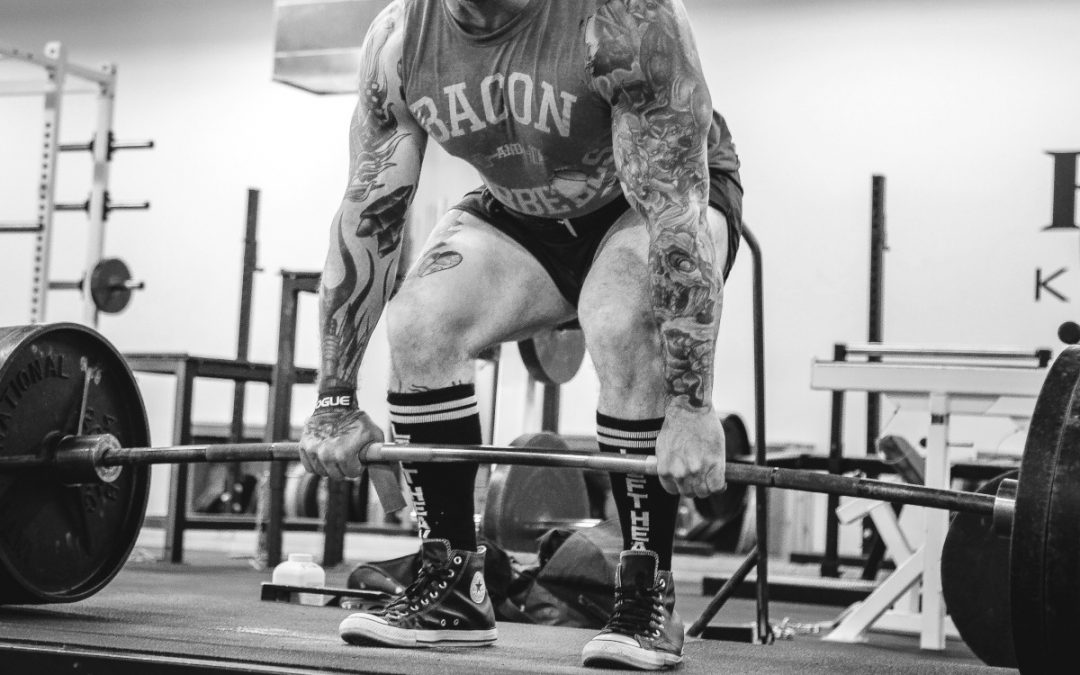Program Name
Doggcrapp Training
Price
Free
Author
Dante Trudel

Why settle for less? Recognized by Google Play, MacroFactor is trusted by over 200,000 users worldwide for its adaptive coaching and verified food database. Take the guesswork out of nutrition and start seeing results!
Enter code INDEED for an exclusive 14-day free trial. Discover MacroFactor's award-winning features.
Primary Goal
Hypertrophy
Secondary Goal
Strength
Special Focus
None
Program Length (weeks, however, it is commonly run for 12 weeks)
Training Days (per week, however, light cardio is recommended on off days)
Average Session Length (in minutes)
Primary Equipment
Commercial Gym (barbells, dumbbells, machines…it all has a place)
Specialty Equipment
None
Novice Friendly?
No
Prerequisite Skills
- Squat variations
- Pressing variations
- Deadlift variations
Summary
Doggcrapp gets its name from Trudel’s username that he used when he started posting the program on bodybuilding forums back in 1999.
Unlike most bodybuilding hypertrophy-based programs which prioritize volume over intensity (other programs focused on muscle growth), Doggcrapp prioritizes intensity over volume. With only one work set for most body parts trained each session, the workouts don’t generally take very long, however, they’re infamously difficult by design.
The majority of every set utilizes a rest-pause protocol. Here’s an example of a rest-pause set: Hit the incline bench at your 10 rep max (RM) until you reach technical failure; stop and rest for 10-12 deep breaths; hit another bout until technical failure; stop and rest another 10-12 breaths; finish the set with one more bout to technical failure.
Some straight sets are implemented as well (depending on the muscle group); deadlifts and calves, for example, do not use rest-pause.
A couple exercises–squat variations for the quads, for example–utilize “widow maker” sets; a straight set, immediately followed by a grueling 20 rep set.
The classic Doggcrapp program requires three training sessions per week. Workouts are structured into two primary templates as follows:
Workout A Template:
- Chest
- Shoulders
- Triceps
- Back width
- Back thickness
Workout B Template:
- Biceps
- Forearms
- Calves
- Hamstrings
- Quads
Important: the order of exercise execution and muscle group facets of Doggcrapp workouts are non-negotiable. Trudel had his reasons for placing biceps, forearms and calves before hamstrings and quads, and I’m almost certain that if you don’t like it, he would politely suggest you choose a different program (most folks I know who go by “Doggcrapp” are the paragon of politeness; I’m sure he’s no exception). The workout templates never change, and neither do the order of operations.
Choose three exercises per muscle group. It’s up to the lifter to make a selection based on equipment; strengths and weaknesses; injury and mobility restrictions; and variety. The TNation article written by Nate Green, How to Build 50 lbs of Muscle in 12 Months provides several examples of exercises that can be plugged into each muscle group.
The weeks are structured as follows: plug the first group of exercises into Workouts A and B for Day 1 and Day 2 respectively. Plug in the second group of exercises for Day 3 and 4 accordingly. Do the same for Days 5 and 6. Rinse and repeat.
Continue with the method above until you no longer progress in an exercise, or you forecast inevitable injury. Trudel wants you to squeeze every ounce of progression out of each exercise, and believes it stupid to change prematurely. A huge objective of the program is to “beat the logbook” (outperform your previous numbers). Once you you’re no longer beating the book, the exercises are no longer doing anything for you; time to swtich.
Detailed progression instructions are outlined in the article link above, but the gist is as follows: keep pushing through the work sets–week after week–until you exceed the required rep range for progression. Upon doing so, add 5-10 lbs to the bar. For the majority of exercises (namely those that use the rest-pause protocol), you’ll aim for 11-15 total reps (again, your total reps accumulated after three technical failures in the set). In this case, you’ll add weight for the following iteration once you exceed 15 reps. If you get less that 11 reps, you’ll remove weight for the following iteration of the workout.
The program utilizes “blast” and “cruise” weeks throughout its duration. Blast weeks refer to the program default (everything discussed so far; working one muscle group per workout to failure; i.e., hard workouts). Cruise weeks are similar to deloads, where the lifter takes a break from the intensity and works with lighter weight, lower reps, and/or abstains from lifting completely until recovered. Blast mode can last for 4-12 weeks, and cruise mode can last for 7-14 days. It’s up to the trainee to decide when they need to make the change between blast and cruise.
Other elements of the program:
Extended static stretching is a required addition to the program. The trainee is encouraged to stretch each muscle group in an intense stretch for 60-120 seconds immediately after training it (before moving to the next exercise). This practice is believed to expand the fascia surrounding the muscle for additional growth.
Light cardio during off days (days when you’re not lifting) is encouraged. Relatively short and low-intensity 30 minute bouts of steady state cardio are strongly suggested. These are intended to aid in recovery, endurance, and general wellness.
Nutrition is also a key tenant of Doggcrapp training. It’s suggested that trainees consume two grams of protein for every pound of bodyweight during blast weeks, and 1.5 grams during cruise weeks (e.g., a 200 lbs man would need to consume 400 grams of protein every day while “blasting”). In addition, trainees should consume 1-2 gallons of water every day, and cease from eating carbohydrates six hours prior to bed time. All of this is suggested in an effort to turn the body into a metabolic “blast furnace” (i.e., minimize fat gain and maximize muscle growth).
Visit the link below to sign up for a free 92 page issue of MASS Research Review (you can read my MASS review here) covering the following topics:
- Blood Flow Restriction Training Causes Type I Fiber Hypertrophy in Powerlifters
- Leave the Gym with a Little Left in the Tank
- Energy Availability in Strength and Power Athletes
- Hormonal Contraceptives Don’t Mitigate Strength Gains
- Power Training or Speed Work for Some, But Not All?
- The Role of Physical Activity in Appetite and Weight Control
- The Science of Muscle Memory
- VIDEO: Program Troubleshooting
- VIDEO Sustainable Motivation for Sport and Fitness
Reviews, Results and Discussions
Reviews
Program Review – One year on Doggcrapp training (review on Reddit)
My Take on DC Training (review on Bodybuilding.com from Mark Subsinsky)
Results
30 Days of Crapp – DoggCrap Training Results and Thoughts
Discussions
DC Training vs Volume for Hypertrophy (TNation forum)
Doggcrapp Training – Experiences?
DoggCrapp: Yes or No? (TNation discussion that includes input from Christian Thibaudeau)
Resources
- All About DoggCrapp Training (pretty much what it says it is…great authoritative source of the program, mainly from Dante Trudel himself)
- How to Build 50 Pounds of Muscle in 12 Months (detailed article of the program by Nate Green on TNation)
- DoggCrapp Training 101 – The Utlimate Load (Guide to the program on TigerFitness.com)
- Doggcrapp Training System (DC) – Complete Guide 2019 (Guide to the program on emerging-athlete.com)
- Lurker’s Guide to DC Training (a solid forum post explaining the ins and outs of the program)
- How Cluster Sets, Rest-Pause, and Drop Sets Affect Strength, Hypertrophy and Power (Research review on Sci-fi.net)

